This series of posts was archived from Mining Morrisonite in order to preserve the content should that blog be taken down in the future.
I discovered the Christine Marie Mine in the Owyhee Canyonlands on my Owyhee Out-and-Backs trip. Upon returning to my visit and looking for more information about the mine as I put my story together, I was delighted to find the entertaining and informative story about several years of its development, from the guy who made it all happen - Eugene Mueller.
Please do enjoy this content, and I encourage you to visit his original blog (if it still exists) as well as his storefront - The Gem Shop, Inc. - to show him support.
Note: No modification has been done to the content of the posts, though some portions have been reformatted to display correctly here.
Rats, Mice, & Snakes: Geology
Friday, November 19, 2010

The Owyhee River Canyon is being pulled apart. The canyon is 2000 feet deep, and the sides of the canyon are falling toward the river. Deep rock slides are everywhere. Rocks falling from the top pile up on each other creating vast labyrinth of hollow spaces in the rock slopes. All these spaces between the rocks are ideal habitats for rats, mice, and snakes. If a miner is going to live here, he is going to live with these animals.
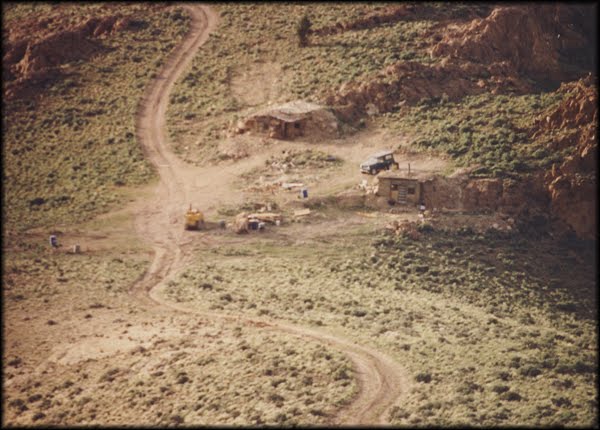
The rats are everywhere, and of course feel right at home in a miner’s cabin, built into a rock wall. There are three such “cabins” in the Morrisonite area, and I have lived in two of them. All of the cabins have resident rats. If these rats were to be exterminated from the cabins, in a bout two days, there would be more to take their place.
This would not necessarily be much of a concern if it were not for the fact that the rats are up all night and sleep during the day, while miners work hard all day and like to sleep at night. There is a small conflict here. The following series of blogs describe some encounters with rats, mice, and snakes while living at and mining the Morrisonite Jasper.
Desert Woodrats: Genus Neotoma
These rats are commonly called “Pack Rats” because they collect various objects and bits of material to deposit, or use in the construction of their nests. They are especially fond of small, bright, shiny objects which they can confiscate. It is a popular superstition that the woodrat is a fair businessman who appropriates something but leaves a replacement of equal value. The rat may see something that is more attractive than what he has, so he puts down the object he is carrying and carries off the other. The rats that live in the Morrisonite area are not fair, considerate, or quiet.

Rats, Mice, & Snakes: The Milk Jug
Tuesday, November 30, 2010
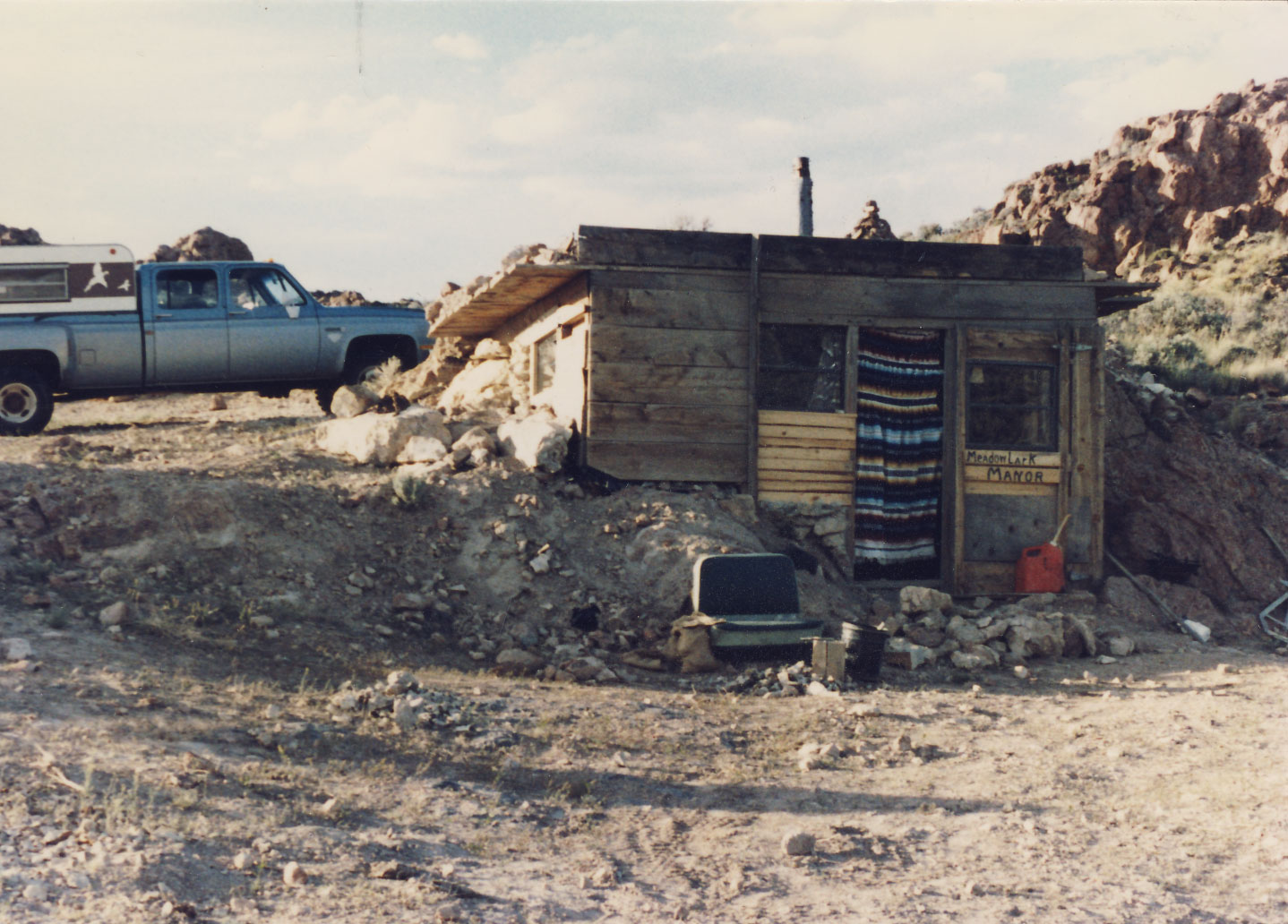
East Cabin
There are two cabins built on the saddle of Sheepshead Ridge. They were built in the mid-‘70s and are the base of operations for most of the mining done in this area. I was living in the east cabin when the following took place.
In preparing to work in the Morrisonite area for any length of time, water is one of the main concerns. There is no water available once you are at the mine. All water for drinking, washing, radiators, etc., must be brought in. Typically the anxious miner will fill up every available container at the last moment before leaving on the long trip in. I credit this activity with producing a number of empty I gallon plastic mink containers which end up lying around the cabin.
I know of no study, nor in my experience can come up with any reason, logic, suspicion, or idea as to why a pack rat will desire a particular object for its nest. Mice will go to great lengths to make their nests soft and warm. Other animals will select with great care items that suit their structural purpose. A pack rat seems to desire something just for its collection.
One night, I was awakened by the clatter of plastic milk jugs on the floor of the cabin. The rat had returned for his nightly inspection of the cabin floor. I almost hit my head on the ceiling at the suddenness of the racket -- the bunk in this cabin is built off the floor, a few feet from the ceiling. I thought to myself: I must get rid of those plastic containers.
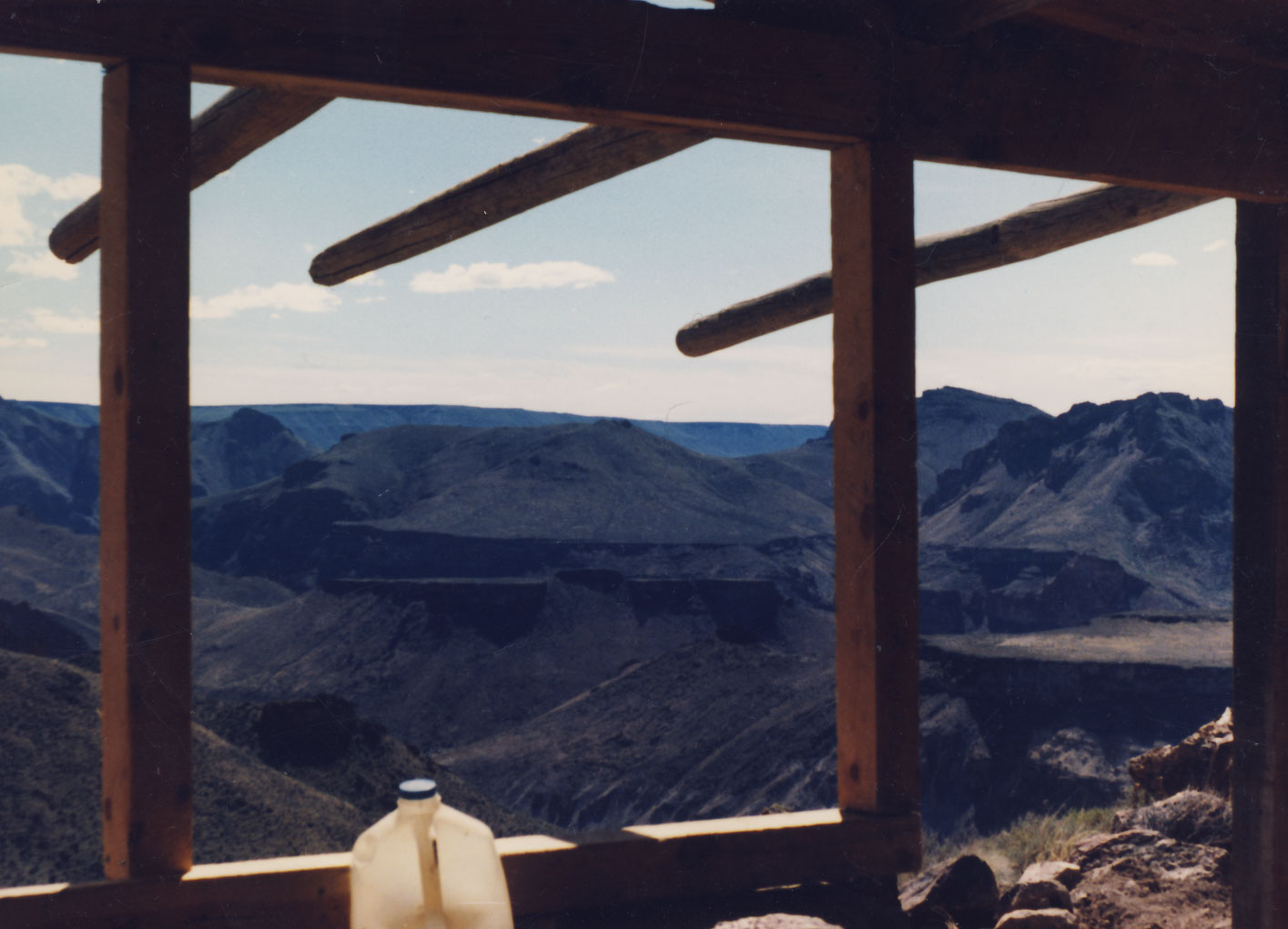
An empty milk jug gazing off into the distance.
Just after falling asleep again, I was awakened by the sound of plastic milk containers scooting across the floor. I got up, chased the rat away, organized the plastic container in the corner where I thought the rat would not bother them, and went back to bed. Rats will be very quiet while you are moving around at night and will not make any noise until you have fallen asleep again.
This cabin, like the others built in the Morrisonite area, is built against a rock wall. This wall slopes from its junction with the roof down to the floor at a steep angle. The junction of the host rock wall and the roof is where the rats live or gain access to the cabin.
While I was lying on my mattress contemplating what to do with the plastic jugs, I saw the rat methodically shove a plastic jug across the floor to the rock wall. Much to my amazement, the rat then tried to push it up the rock wall! The plastic, gallon jug was about three times the rat’s size. The rat would put his front paws on the jug and try to move it up the wall. Like a gigantic beach ball, it would then fall back onto the floor. He tried and tried, but it was not going to work for him. The jug was just too big. He was not going to push it up the wall or through the small hole between the roof and the wall, or into his nest – wherever that was. Too bad, it probably would have been the centerpiece of his collection.

The closest source for water is a mile away and 200 feet down from the cabins.
Rats, Mice, & Snakes: Rat Personalities
Friday, December 17, 2010

Cabin on the Christine Marie Claim
It was an especially dry year. Eastern Oregon had very little snow in the preceding winter and no spring rains. When I arrived at my cabin on the Christine Marie Claim, there was no moisture in the soil at all. Every step created a dust cloud.

Notice the poles over the doorway.
I had lived in the cabin for several mining operations. I built it after I determined that the drive everyday from the cabins above was too dangerous and time consuming to be driven every day. I worked on building the cabin slowly and sporadically over two years. Like the cabins above on the saddle, it is built against a rock wall. This wall, however, is the side of a huge boulder that had rolled down from above at an earlier time.
The cabin is made out of large rocks, scraps of wood, old plywood flooring and four long poles. I spent a total of $34.00 on its construction – mostly for nails and a glass window. The room is about 10 feet square with a door opening and window in the front wall and one window in the other two walls. The rock wall in the back of the cabin is fairly vertical with only a slight slope down to the relatively flat floor. The four polls are mounted to the top of the rock and extend out past the front wall. These poles support the plywood which was covered with dirt and rocks for the roof. Where these poles are mounted to the large boulder there is narrow space between the roof and the rock. It is here that our nightly friends live – or at least enter and exit the cabin.
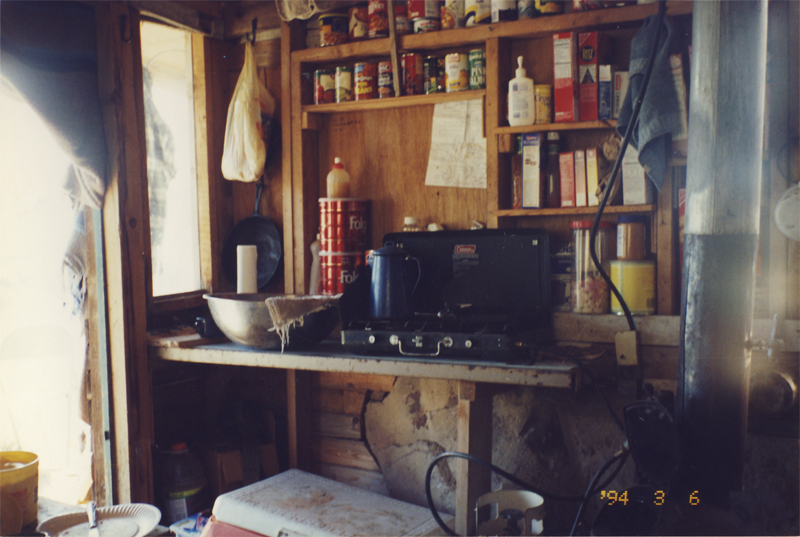
The wash basin is hiding in the corner to the left of the stove.
I got all of the equipment running and started to mine Morrisonite. Sleep comes easy to a tired miner, and the antics of our nocturnal friends living between the ceiling and the rock can be particularly irritating. This year there were some young rats entering the cabin every night to look around. I say they were young because they were not very big, yet very energetic. They would come down the back wall and make all kinds of racket busily inspecting and climbing on everything in the cabin. They would knock cans of food off the shelf and walk all over my propane stove as noisily as possible retrieving the scraps left on it from my dinner.
One night after I had chased the rats away several times and did not want to get out of my bunk again, I just laid there and watched them. Out of the corner of my eye I saw something move on the rock wall beside my bunk. Much to my surprise, moving very slowly down the rock wall was a HUGE rat, not making a sound.
The two rats below, however, started a soccer game. Next to my propane stove there was a large metal wash basin which was ½ full of dirty dish water. The huge mama rat made her way to the wash basin very quietly and sniffed the water inside.

Books and literature on pack rats will tell you that rats do not drink water. They say rats get all their moisture from the vegetation they eat. This five pound rat looked thirsty but also looked like she was afraid of water. She took her front legs, put them on the rim of the wash basin and spread them out as far as she could. Then, one at a time brought her hind legs up onto the rim. Balancing herself spread eagle on the edge of the wash basin, she carefully lowered her head and took a long drink of dirty dish water. Below, one of the other rats scored a goal. Carefully, the big rat reversed her position, hopped off the basin, made her way to and slowly up the rock wall, and disappeared without making a sound.
With the younger two still volleying, I tried to get back to sleep.
Rats, Mice, and Snakes: Killing Rats
Friday, December 31, 2010

The front-end loader parked at "Jasper Blvd."
A miner needs his sleep. If a rat is going to repeatedly disturb that sleep it needs to be stopped. In the eleven years I worked mining Morrisonite I never thought to take a rat trap out to the mine. Perhaps there are just too many other things to worry about in preparing to move to the mine to remember a few rat traps. On the other hand, what good would that be anyway? The problem is not the rats but the noise they make. A rat in a cage would make almost as much noise as one inspecting your kitchen. Eliminating a few rats creates a reprieve from some of those sleep depriving night interruptions.
It is only a reprieve because there is an abundance of rats living in the rocks containing the Morrisonite Jasper. If a rat moves on to a better place, that just means there is more territory for another one. It takes only 2 or 3 days to replace a missing rat in your cabin. The new ones seem to be especially excited about running through your stuff looking for something to add to their collection.
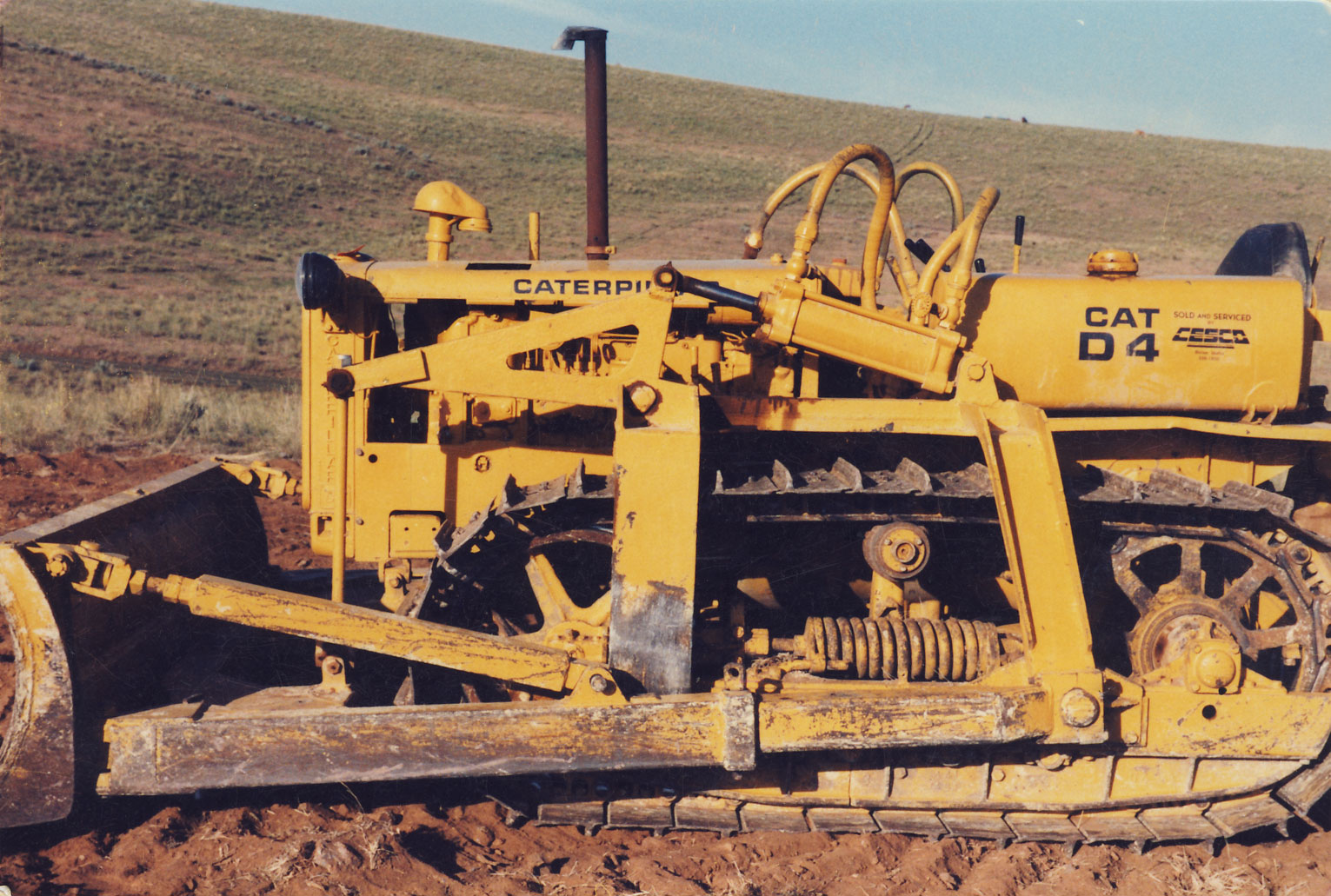
Gene's D4 Dozer with the missing release valve pipe in the rear
The weapons I have chosen in my nighttime skirmishes with rats consist of a five foot piece of ¾ inch pipe and a flashlight. The pipe I have used for years, and I believe came off my D-4 Dozer during a repair session and never was reinstalled. It is painted yellow like all mining machines. The idea is to hit the rat with the pipe using it like a spear after you find it with a flashlight. If you shine a flashlight on a rat in the dark it will freeze in its tracks like a clay statue. It will just stay that way until the light moves. You can actually get very close as long as you do not move the light. This is very important because my aim with the yellow D-4 spear is not very good. What actually happens during one of these executions is something like this: when the signal goes from your sleep-groggy brain to your right hand which is holding the rat-killing D-4 spear instructing it to thrust at the rat, your left arm involuntarily moves the flashlight allowing the rat to move just enough to avoid the descending projectile. This process usually repeats itself a number of times before luck or perseverance sends the rat to a better place.
I have often bemused myself wondering how this might look to an independent observer: a groggy man standing in his cabin in the middle of the night holding a flashlight in one hand and stabbing the ground with a yellow pipe in the other.
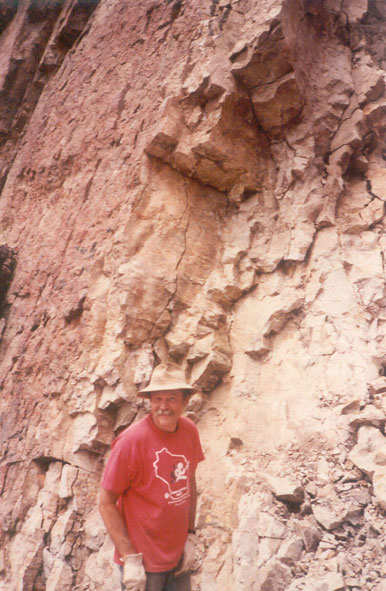
Gene mining at the Cliff Area on the Christine Marie Claim.

